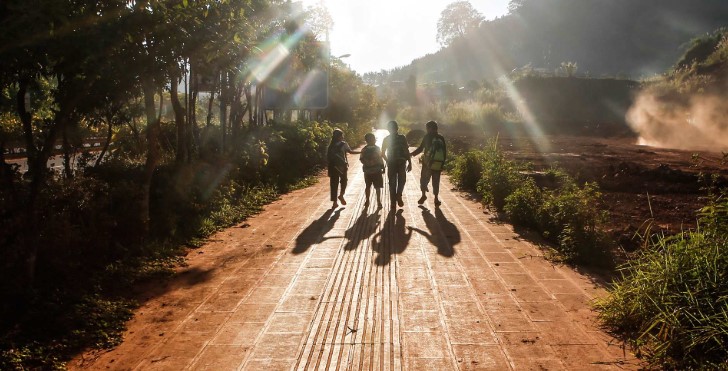
A Short History of Boten, Laos: Treading Through Peaks and Valleys
Boten was born in 2003, and suffered through a
troubled childhood. Now, it is “finding itself”, and looks set to mature as a
major Southeast Asia commercial hub.
Before
2000, the Tai Lue ethnic group farmed the land in what is now Boten, just
across from the Chinese border in northern Laos. However, all that changed in
2003, when a Hong Kong-registered developer signed a 30-year lease with the Lao
government for the 21-sqm site. They compensated and relocated the Tai Lue, and
began work on the Special Economic Zone under the banner, “Boten Golden
City”.
The plan
called for a tourism destination with resorts, apartments, a golf course,
lakes, ecotourism activities, and duty free shopping. Developers also saw
potential in Boten as a trade hub that could transition Laos from a landlocked
to land-linked country. The location fell in line with China’s Belt and Road
Initiative to connect the country to Thai and Singaporean ports.
However, once
the construction dust settles, a reality far from a green resort town appeared.
Chinese visitors would cross the border with no need for a visa, to face a
gambling bonanza. Pastel colored hotels and casinos formed a horseshoe around
aisle after aisle of duty-free shops selling cigarettes, liquor, and dubious
brand name products, and even haircuts, shoe shines, and fresh fish.
Stiletto-heeled prostitutes roamed the endless rows of goods. Then the news got
even worse.
With
gambling comes loan sharks, and the money lenders played by a simple rule: pay
or die. By 2010, articles emerged in the Chinese press about casino debtors
being held hostage until their families could pay. Forbes Asia reported that
dead bodies of gamers in debt had been dumped in a river. Enough was enough,
and in stepped the Chinese government.
In March
2011, China cut electricity and telecom service to Boten, though the city sits
in Laos. They shut down casinos in May, and put a halt to visa-less border
crossings. Boten folded like a house of cards. Shops and restaurants closed.
Hotel rooms stood empty. A destination that had once welcomed 10,000 visitors a
day went quiet. Nothing but tumbleweed rolled down the duty-free alleys.
It didn’t
take Laos long to learn from their mistakes. In April 2012, the Lao government
inked an agreement with the Yunnan Hai
Cheng Industrial Group and the Hong Kong Fuk Hing Travel Entertainment Group,
who had also invested in the first go around. They presented the new
development as “Beautiful Boten”, and according to Lao media, Chinese investors are sinking more
than $1.5 billion into the project.
With the new deal
came new rules, and topping the Lao government’s chart is “No Gambling”. They
also switched Boten’s status from a Special Economic Zone to a Specific
Economic Zone. This gives Luang Namtha authorities more control over social and
security issues. The investors are fine with this, Lao officials told the
media. They added that the investors want to transform Beautiful Boten into a
tourism destination showcasing the Tai Lue culture, alongside a commercial hub.
A visual rendition presents 3D
details of Beautiful Boten. It shows blocks with 18-story towers with hotels,
offices, and duty-free shops in the Central Business District. Tourism attractions,
a golf course, international bus station, and factories sit on the perimeter.
Construction is now in full swing,
with several of the high-rises already topped off, and interior finishing
underway. As one Boten tenant said, “The idea is to create a city where 300,000 people can live,” but Boten
is pinning its hopes on its strategic train station along the $7-billion Kunming, China-Vientiane high-speed railway.
Work on the
414-km electric railway kicked off in late 2016, and is on time for completion
by December 2021. In Laos, the mega-project includes 198 km of tunnels and 62 km
of bridges, and runs from the Boten border gate to Oudomxay, Luang Prabang, and
Vang Vieng, before the Vientiane terminal. The train can reach speeds of 160 km
per hour, cutting days off the truck routes while offering passengers a fast,
inexpensive and scenic way to move around Laos.
Much of
Beautiful Boten will be ready to open when the railway is completed, and a new
era will begin in the life of this maturing destination. Chinese investors and
the Lao government are optimistic about the future of Boten, as this time the
plan is more strategic and not based on a roll of the dice.
